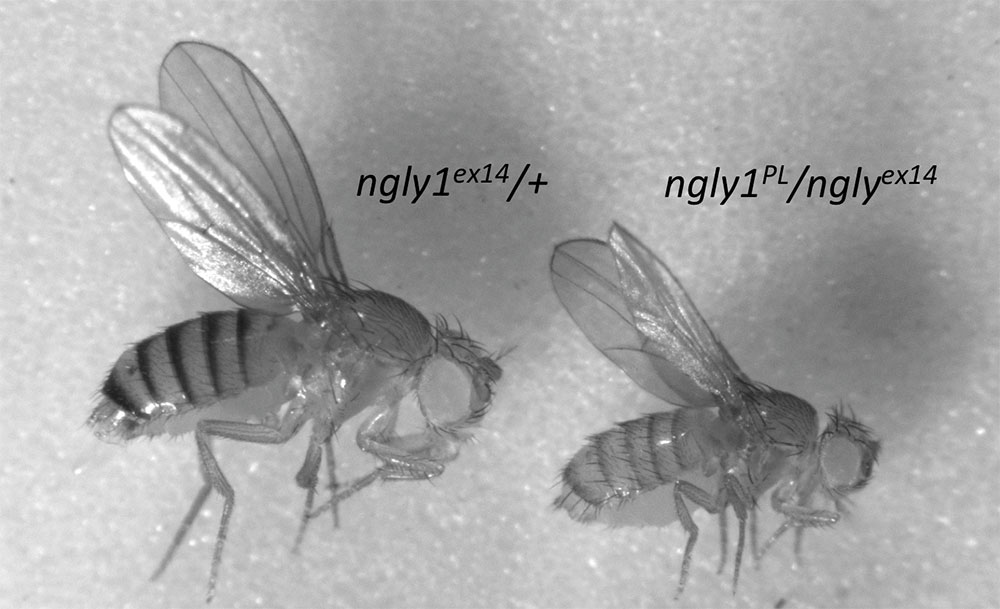This past weekend was the 2016 Grace Science Foundation Meeting in Palo Alto. It was a great success! Here are the slides from my talk, with a few blurbs about them and what’s to come.



Curious about this? Check out my first blog on making NGLY1 flies. Prior to showing this slide I mentioned that at the first Grace Science meeting, it was presented that patient fibroblasts did not at the time have an observable phenotype. That observation led us to propose using NGLY1 Drosophila for drug screens. Tadashi Suzuki’s lab had shown that NGLY1 flies do have obvious phenotypes. Drugs that rescue those phenotypes nearer to normal might be good candidates to pursue as possible NGLY1 therapies.

This is an image of the fly ngly1 gene taken from a paper by Tadashi Suzuki’s lab with our ngly1^PL insertion indicated. I think these probably all have equivalent loss-of-function (see data below).


Because NGLY1 larvae are developmentally delayed, they’re a bit smaller then their heterozygous siblings of the same age.

Here’s the data to indicate that all ngly1 alleles are probably of the same strength. Also, in our hands, the NGLY1 fly has a more subtle phenotype then others have observed. Tadashi’s lab, and Hamed Jafar-Nejad’s lab, see lots of larval and pupal lethality. They rarely ever see NGLY1 adult flies, while almost 50% of ours make it to adulthood. We’re trying to determine why there’s such lab-to-lab variability. We’ve already tested food/meda, and it’s not that. Hamed says “it must be the California air.”

When we raise ngly1 flies at lower temperatures, it appears to enhance lethality. This could be a convenient way to manipulate the phenotype for genetic and pharmacological modifier screens.



Bonus fly genetics tidbit: The “actin-gal4” we used here is not the typical actin-gal4. It’s the gene-switch actin-gal4 that should mainly only be induced with RU486. We really wanted these to be flies with conditionally regulated ngly1 expression. It appears that gal4 expression is leaky in this line, and we’ve confirmed that by looking at GFP expression. The insertion in this strain is induced very strongly with RU486 added to the media at 0.1ug/ml. Any higher then that is lethal.

We chose to move forward with larval size as a phenotype to develop a high throughput screen around. To do this, we worked with Modular Science to build a custom imager. We are thrilled with the quality of these images, and the image analysis software (below).


Tamy wrote previously about how NGLY1 flies are 5-10X more sensitive to DMSO. This image and plot below nicely illustrate that observation. Our drug library is at 10mM in 100% DMSO. When the drugs are diluted to 10uM in our assay plates, the DMSO will be diluted to 0.1%. Conveniently, this amount of DMSO enhances the larval size phenotype to a point where homozygotes are reproducibly smaller then heterozygotes with our image analysis software (see far below).


Now it’s time to start screening compounds. Any that can make small ngly1 homozygous larvae about the size of heterozygotes will be interesting. We’ll then validate those in an assay to try and suppress lethality of pupae at temperatures below 25 degrees. Fingers crossed for strong and interesting hits!


